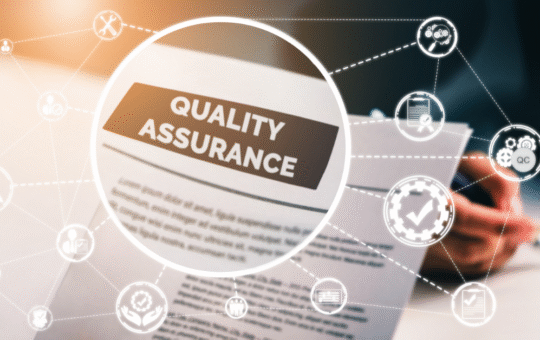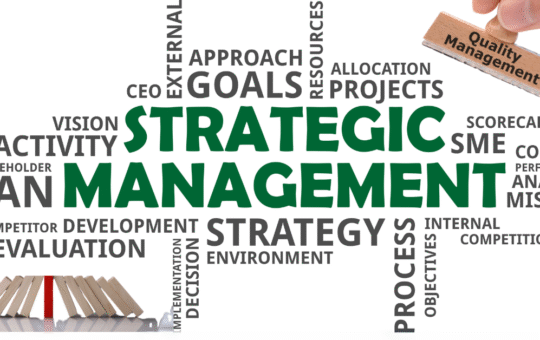
Level 5 Diploma in Lean Six Sigma Green Belt Certification
- Master Lean Six Sigma tools and techniques for process improvement.
- Gain the skills to lead process improvement initiatives across various departments.
- Enhance your ability to identify and eliminate inefficiencies within business processes.
- Obtain a globally recognized certification that will elevate your career prospects in project management, operations, and quality control.
- Understand the core principles and methodologies of Lean and Six Sigma.
- Learn how to implement process improvement projects using the DMAIC (Define, Measure, Analyze, Improve, Control) framework.
- Develop the ability to identify and reduce process variation and waste.
- Gain insights into data-driven decision-making and statistical analysis for process optimization.
- Learn to lead and manage Lean Six Sigma projects in a variety of industries.
- Introduction to Lean Six Sigma
- Key concepts and benefits of Lean Six Sigma.
- The relationship between Lean (eliminating waste) and Six Sigma (reducing variation).
- DMAIC Framework
- Overview of the DMAIC methodology for process improvement.
- Understanding each phase of the DMAIC cycle.
- Data Collection and Analysis
- Techniques for data gathering and measurement.
- Statistical tools for analyzing data and understanding process variation.
- Process Mapping and Improvement Tools
- Flowcharts, Value Stream Mapping, and SIPOC diagrams.
- Tools like Fishbone Diagram, Pareto Analysis, and 5 Whys.
- Lean Tools and Techniques
- Key Lean principles: 5S, Kaizen, Kanban, and more.
- Techniques for eliminating waste and improving process flow.
- Project Management and Control
- Managing Lean Six Sigma projects: roles, responsibilities, and timelines.
- Tools for sustaining improvements and ensuring long-term success.
- Advance to the Level 6 Black Belt certification for more advanced process improvement techniques.
- Pursue roles such as Lean Six Sigma Project Manager, Process Improvement Specialist, or Operations Manager.
- Lead Six Sigma projects in industries such as manufacturing, healthcare, IT, and service sectors.
- Expert Training: Learn from instructors with extensive experience in Lean Six Sigma and process improvement.
- Practical Focus: Real-world case studies and hands-on projects to build applicable skills.
- Global Recognition: Certification that enhances your career opportunities internationally.
- Industry-Relevant Content: Designed to meet the needs of today’s businesses seeking efficiency and quality improvement.
Study Units
- Introduction to Lean Six Sigma
- Key concepts and benefits of Lean Six Sigma.
- The relationship between Lean (eliminating waste) and Six Sigma (reducing variation).
- DMAIC Framework
- Overview of the DMAIC methodology for process improvement.
- Understanding each phase of the DMAIC cycle.
- Data Collection and Analysis
- Techniques for data gathering and measurement.
- Statistical tools for analyzing data and understanding process variation.
- Process Mapping and Improvement Tools
- Flowcharts, Value Stream Mapping, and SIPOC diagrams.
- Tools like Fishbone Diagram, Pareto Analysis, and 5 Whys.
- Lean Tools and Techniques
- Key Lean principles: 5S, Kaizen, Kanban, and more.
- Techniques for eliminating waste and improving process flow.
- Project Management and Control
- Managing Lean Six Sigma projects: roles, responsibilities, and timelines.
- Tools for sustaining improvements and ensuring long-term success.
By completing this course, learners will:
- Understand the core principles and methodologies of Lean and Six Sigma.
- Learn how to implement process improvement projects using the DMAIC (Define, Measure, Analyze, Improve, Control) framework.
- Develop the ability to identify and reduce process variation and waste.
- Gain insights into data-driven decision-making and statistical analysis for process optimization.
- Learn to lead and manage Lean Six Sigma projects in a variety of industries.
The Level 5 Diploma in Lean Six Sigma Green Belt Certification is ideal for professionals who want to develop expertise in process improvement and quality management. This course is designed for:
Process Improvement Professionals
Individuals in roles focused on improving business processes, reducing inefficiencies, and enhancing product quality who want to gain Lean Six Sigma expertise to lead improvement projects.
Project Managers
Professionals managing projects that aim to enhance operational efficiency and quality, looking to gain structured tools and methodologies to drive change across departments.
Operations Managers
Those responsible for overseeing daily operations who want to implement Lean Six Sigma strategies to streamline processes, reduce waste, and improve performance in their teams.
Quality Assurance and Control Professionals
Individuals working in quality assurance roles who aim to master Lean Six Sigma methodologies to improve product quality and standardize processes.
Data Analysts and Process Analysts
Professionals who deal with data and process performance and want to deepen their knowledge of statistical analysis and data-driven decision-making to optimize processes.
Team Leaders and Supervisors
Those leading teams in manufacturing, service, or operational environments, looking to enhance their leadership skills and implement process improvements through Lean Six Sigma.
Consultants
Consultants advising companies on operational efficiency or quality improvement who wish to integrate Lean Six Sigma tools into their approach to help clients achieve business excellence.
Our assessment process is designed to ensure every learner achieves the required level of knowledge, skills, and understanding outlined in each course unit.
Purpose of Assessment
Assessment helps measure how well a learner has met the learning outcomes. It ensures consistency, quality, and fairness across all learners.
What Learners Need to Do
Learners must provide clear evidence that shows they have met all the learning outcomes and assessment criteria for each unit. This evidence can take different forms depending on the course and type of learning.
Types of Acceptable Evidence
Assignments, reports, or projects
Worksheets or written tasks
Portfolios of practical work
Answers to oral or written questions
Test or exam papers
Understanding the Structure
Learning outcomes explain what learners should know, understand, or be able to do.
Assessment criteria set the standard learners must meet to achieve each learning outcome.
Assessment Guidelines
All assessment must be authentic, current, and relevant to the unit.
Evidence must match each assessment criterion clearly.
Plagiarism or copied work is not accepted.
All learners must complete assessments within the given timelines.
Where applicable, assessments may be reviewed or verified by internal or external quality assurers.
Full learning outcomes and assessment criteria for each qualification are available from page 8 of the course handbook.
Top Courses
Related Courses
Let's Get in touch
Deleting Course Review
Course Access
This course is password protected. To access it please enter your password below:



